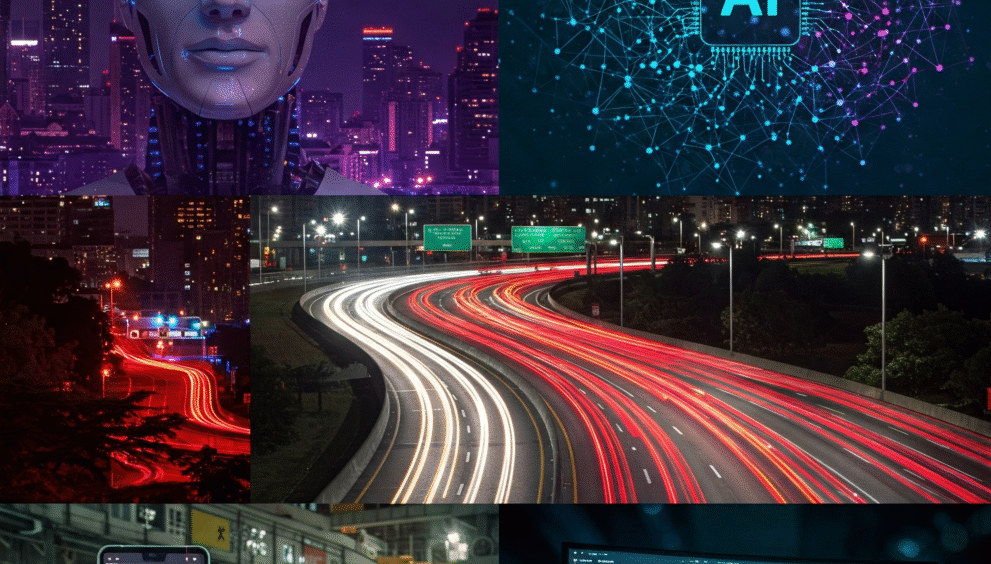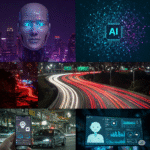Decoding the Digital Brain: A Look at the Different Types of AI

Artificial Intelligence. The phrase conjures images of sentient robots, self-driving cars, and algorithms that predict our every move. While some of this is science fiction (for now!), the reality of AI is already deeply woven into the fabric of our daily lives. But just like the human brain has different regions responsible for different tasks, the world of AI is far from monolithic. It’s a diverse landscape of different types, each with its own capabilities and limitations.

Understanding these distinctions is key to appreciating the true potential and current state of AI. So, let’s dive into the fascinating world of AI classifications:
1. Based on Capability:
This is perhaps the most common way to categorize AI, focusing on how well an AI system can perform tasks compared to human intelligence.
- Artificial Narrow Intelligence (ANI) or Weak AI: This is the AI we interact with every day. ANI is designed and trained to perform a specific task exceptionally well. Think of your spam filter, voice assistants like Siri or Alexa, recommendation systems on Netflix, or even the AI that plays chess. These systems excel within their defined scope but lack the ability to perform other tasks. They don’t possess consciousness, sentience, or general problem-solving abilities. Currently, the vast majority of AI falls under this category.
- Artificial General Intelligence (AGI) or Strong AI: This is the hypothetical “human-level” AI. An AGI would possess the intellectual capability to understand, learn, and apply knowledge across a wide range of tasks, just like a human can. It would have the ability to reason, plan, solve complex problems, think abstractly, and even understand nuances like emotions and context. AGI is still largely theoretical and remains a significant research goal. We haven’t yet developed a system that can truly replicate the breadth and depth of human intelligence.
- Artificial Superintelligence (ASI): This is the realm of science fiction and potential future development. ASI would surpass human intelligence in virtually every cognitive domain. It would be capable of intellectual feats far beyond the reach of even the brightest human minds. While captivating, ASI also raises profound ethical and societal questions, and its feasibility remains highly speculative.
2. Based on Functionality:
This categorization focuses on what the AI system is designed to do.
- Reactive Machines: These are the most basic type of AI. They react to present stimuli based on pre-programmed rules and lack memory of past experiences. A classic example is Deep Blue, the IBM computer that defeated Garry Kasparov in chess. It analyzed the current board and made moves based on its vast database and algorithms but had no concept of past games or opponent strategies in a human sense.
- Limited Memory: These AI systems can store past information for a short period and use it to inform their current decisions. Self-driving cars are a good example. They need to remember the speed and location of other vehicles in their immediate vicinity to make safe driving decisions. However, this stored information is typically transient and not retained long-term for broader learning.
- Theory of Mind: This is a more advanced and currently theoretical type of AI. A “Theory of Mind” AI would understand that other entities (humans, other AI) have beliefs, desires, intentions, and emotions that can influence their behavior. Achieving this level of understanding is crucial for seamless and intuitive human-AI interaction. Research in this area is ongoing, focusing on developing AI that can better interpret and respond to human social cues.
- Self-Awareness: This is the most advanced and still purely hypothetical type of AI. A self-aware AI would not only understand its own existence but also possess consciousness, feelings, and a sense of self. This concept delves into philosophical territory and is far beyond our current technological capabilities.
The Ongoing Evolution:
It’s important to remember that these categories are not always rigid, and the field of AI is constantly evolving. New approaches and hybrid systems are emerging, blurring the lines between these classifications.
Understanding the different types of AI helps us:
- Set realistic expectations: We can better appreciate what current AI can and cannot do, avoiding overhyping or underestimating its capabilities.
- Identify appropriate applications: Knowing the strengths and weaknesses of different AI types allows us to apply them effectively to solve specific problems.
- Navigate ethical considerations: As AI becomes more sophisticated, understanding its potential impact and limitations is crucial for responsible development and deployment.
The journey of AI is just beginning. As research progresses and technology advances, we can expect to see even more nuanced and powerful forms of artificial intelligence emerge. By understanding the fundamental types of AI, we can better navigate this exciting and transformative technological landscape.

























































































